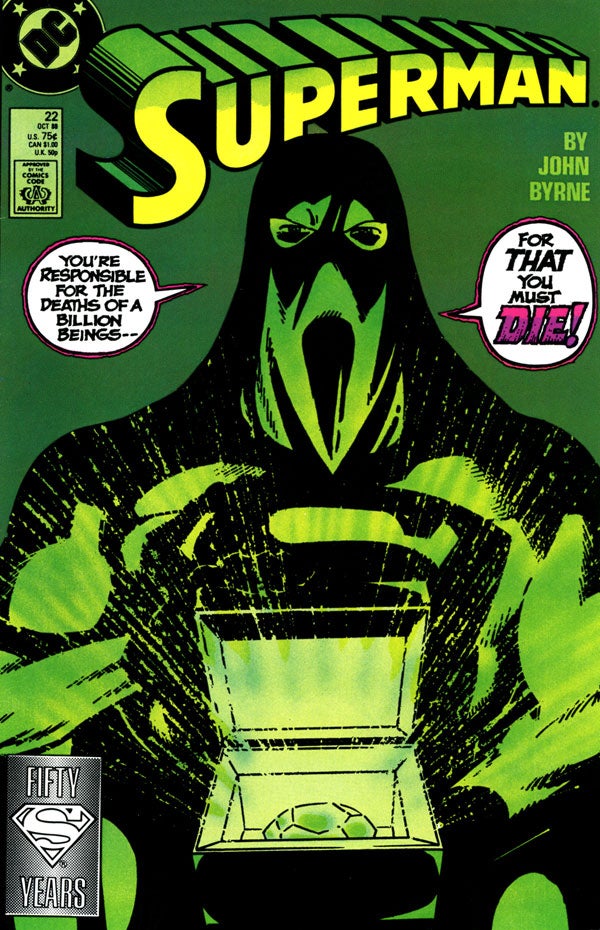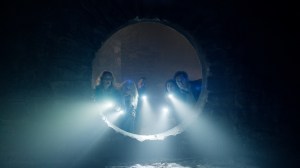It’s rare that a comic book creator says the movie did it better — but that’s just what happened recently when one of the best-selling Superman writer/artists of all time was asked about Man of Steel‘s controversial climax.
Videos by ComicBook.com
When fans first started to complain about the death of General Zod in Man of Steel, one of the defenses that writer David S. Goyer came up with was the idea that John Byrne had done something fairly similar during his status quo-shattering run on Superman and Action Comics in the late ’80s.
“Superman has killed Zod before,” the writer told me at Comic Con International in 2013. “We didn’t invent that.”
That year, the 75th anniversary of Superman’s first appearance took center stage, and fans were eager to ask about the then-new movie and its implications for the cinematic Superman.
“Our advantage was that we had another thirty comics we published that year,” former Superman group editor Mike Carlin said at the time, noting that they faced controversy when they did it, as well.
Still, he maintained, fans could much more quickly and easily see that the events of the story had taken a toll on Superman and what that meant for the character and the comic going forward.
Nevertheless, in a new podcast interview, longtime Superman writer/artist Dan Jurgens was asked about the challenges of joining the Superman books shortly after those events took place — and said he felt Man of Steel did it better.
In Superman #22 by John Byrne, the character was faced with Zod and two of his cohorts, who had extinguished all life in a parallel universe that included a version of Earth. Superman, who had been called in by that world’s Supergirl to help, ultimately executed the Kryptonian criminals using Kryptonite (which did not affect him because he was from a different universe and Kryptonite was slightly different — something that would be used again in Infinite Crisis and other stories dealing with Superboy Prime). The Kryptonians had been previously rendered powerless by gold Kryptonite, and while they threatened — as Zod did in the movie — that they would never stop, that they would find a way to travel to Superman’s world and kill everyone there as well — they gave up their bluster and pleaded for mercy when Superman produced the Kryptonite. As you can see in the panel at top, Superman was unmoved, putting them to death for their crimes against humanity.
“It was hugely controversial and I think if the Internet had existed at that time, it would have been that times three,” Jurgens told Comicosity. “I always thought that if Superman was going to be put in that position, that it had to be a more immediate threat. It didn’t bother me so much, Superman killing the Kryptonians, as it was him being just a stone-cold executioner. If you think of that cover — there’s a green cover and I think it was Superman itself where he’s actually wearing the hood like an executioner would wear. That was, to me, the problem. If you wanted to have Superman kill the Kryptonians, I think it had to be a situation where innocent life was in immediate peril and the only way to stop them from taking innocent life was to kill them. At that point, Superman makes the same decision, but he’s much more Superman as part of that. And the funny thing is, everybody gets twisted in knots over of that scene in the movie — yet that’s what Superman did. When Superman kills Zod in the movie, it’s because there are human beings there who are in immediate danger. The problem with the comic book was, I always thought, not that Superman did it as it was the way he did it, because he was judge, jury and executioner right there. And it was a police officer walking right up to an individual who had dropped his gun, dropped his knife, said ‘I surrender,’ waved the white flag…and still [blowing] his head off. That’s basically what it was.”
So…why did Jurgens leave that storyline intact for years during his run on Superman, rather than writing something that would have minimized the perceived damage?
“I think that would have been unfair to the readers,” Jurgens argued. “And frankly it would have been unfair to John and to the character himself. It’s important to remember, at that time, Superman was experiencing a new height in popularity, more people were reading the book, more people were on board with it, and there were people who liked that story. It wouldn’t have been for me to go retcon it. I wouldn’t have felt right doing that. I wouldn’t have written it the way it was done, but that doesn’t mean I thought it was something that should be done away with.”
Seemingly agreeing with Carlin’s assessment, he said that “the story became the device that was used for him to say ‘I will never kill again.’ So I think you take that story and then turned it into a greater asset for the character, and agan it was making lemonade out of the lemons and I think it’s a story that still serves the character well for what he ended up becoming.”
That lemonade? The Exile storyline, one of the most popular stories of that era, in which Superman fled Earth after becoming concerned that he could be a threat to humanity. The ramifications of the storyline continued on and on throughout the post-Crisis on Infinite Earths, pre-Infinite Crisis Superman comics, though, reverberating through stories like Dark Knight Over Metropolis, where Superman gave Batman a Kryptonite ring and asked him to be Earth’s failsafe in case Superman should ever become a threat — and even The Reign of the Supermen!, when a character introduced in Exile was key to resurrecting a then-dead Superman.
Whether anything like that is planned for Batman V Superman: Dawn of Justice and other DC Cinematic Universe films is as yet unknown, although filmmakers have stated repeatedly that fallout from Man of Steel would be felt in Batman V Superman in some form.










